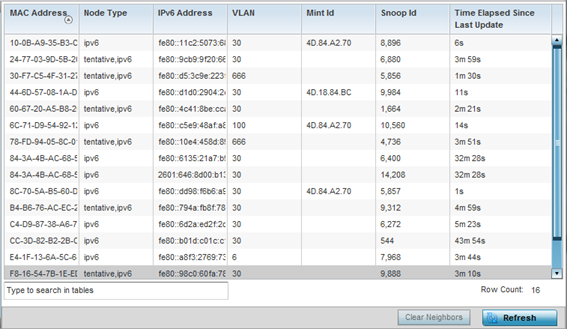AP IPv6 Neighbor Snooping
About this task
IPv6 snooping bundles layer 2 IPv6 hop security features, such as IPv6 ND inspection, IPv6 address gleaning and IPv6 device tracking. When IPv6 ND is configured on a device, packet capture instructions redirect the ND protocol and DHCP for IPv6 traffic up to the controller for inspection.
A database of connected IPv6 neighbors is created from the IPv6 neighbor snoop. The database is used by IPv6 to validate the link layer address, IPv6 address and prefix binding of the neighbors to prevent spoofing and potential redirect attacks.
Access Points listen to IPv6 formatted network traffic and forward IPv6 packets to radios on which the interested hosts are connected.
To review IPv6 neighbor snooping statistics:




